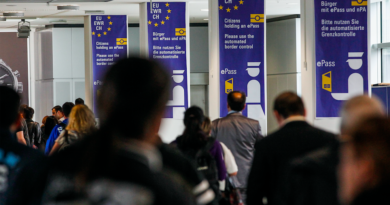How the public pilot of the settled status scheme works: a test by lawyers
Amidst the chaos and uncertainty surrounding the Brexit deal, the Home Office launched the public pilot of its EU Settlement Scheme (also called “settled status”) on 21 January 2019. We used this opportunity to make an application for one of the EU citizens in our firm. The below provides some of our insights into the process:
Who can apply?
An application under the public beta phase of the EU Settlement Scheme can be made by:
- A resident EU citizen with a valid biometric passport (but not a dual British/EU citizen); or
- A resident non-EU citizen family member who has been issued with a biometric residence card
What do you need to apply?
In the first instance, you will need:
- An Android phone
- The EU Exit ID Document Check App
- An email address
- A telephone number
- Your Biometric passport, if you are an EU citizen
- Your Biometric Residence if you are a non-EU family member
- If you have one, your national insurance number
- If you have one, your permanent residence document number
Depending on the outcome of the Home Office’s automatic checks, you may also need to provide additional evidence of residence. (This is discussed further below.)
How much does it cost?
There is no fee if you have a permanent residence card and have not been out of the UK for more than five years or indefinite leave to remain and have not been out of the UK for more than two years.
You will have to pay an application fee: £65 for adults and £32.50 for children.
However, Theresa May has announced that the fee will be waived when the Scheme is fully launched in March 2019, and that all those who pay a fee under the pilot phase of the Scheme will be reimbursed.
What types of status can you apply for under the Scheme?
There are two types of status that you can apply for under the scheme: settled status and pre-settled status.
EU nationals and their family members who have lived in the UK for 5 years should be given settled status. There are some categories of people who can qualify for settled status before 5 years, including, provided certain conditions are met, those who have ceased working due to retirement or incapacity, or the family members of deceased EU nationals.
Children under the age of 21 of EU nationals who have been granted settled status will also be given settled status, even if they have not themselves lived in the UK for 5 years.
Those who have not yet lived in the UK for 5 years will be granted pre-settled status for a period of 5 years. Once they have reached 5 years’ residence, they will be able to switch to settled status.
Application process
The first stage of the application process is carried out on the EU Exit ID Document Check App on an Android phone. This involves the following stages:
1. You are asked if you are an EU citizen, or family member of a non-EU citizen
2. You will be required to scan the ID page of your biometric passport or biometric residence card
3. You will be asked to enter your contact details including your phone number and email address
4. You will receive a text with an authentication code, which you will need to then be asked to enter into the app
5. You will be required to lay your phone on top of your passport so that the biometric chip can be scanned
6. You will be required to scan your face (while multiple flashing colours come onto the phone screen)
7. You will be asked to take a photo of yourself, more commonly known as a ‘selfie’ (which will be used on the digital document confirming your status if the application is successful)
8. You will be asked to confirm the information on your passport
To proceed to the second stage of the application, you will then need to log into the Gov.UK website using the details of your passport or biometric residence card. You will then be sent another code to your phone, which you will need to enter.
After this, you will be asked a series of questions about:
– whether you hold dual nationality or have had any other nationality in the past;
– your address, national insurance number and if you have ever been known by any other name;
– whether you have a document certifying permanent residence card or indefinite leave to remain; and
– whether you have any criminal records or have been involved in any extremist activity.
You will then be asked to choose and answer three security questions such as “What was the name of your first pet?” The Home Office state that they will use these security questions to confirm your identity if they need to contact you over the phone.
You will be required to complete a declaration stating that:
– You are in the UK.
– The information you have given is correct to the best of your knowledge.
– You are eligible and have been resident in the UK for either:-
– The period the Home Office data shows if you accept this; or
– The period you apply for, if you disagree with the Home Office.
– The photograph you submit of yourself is an accurate likeness of you.
The ‘consideration’ page:
Once you have completed the declaration page, you will then be taken to a ‘consideration’ page, which produces four possible results. Your result will be based on the automatic checks the Home Office have stated they are doing with HMRC, DWP and their own records. They are:
- You’ll be considered for settled status (the tax and benefit history we could match you to indicate that you’ve been continuously resident in the UK for at least 5 years)
- You’ll be considered for pre-settled status (the tax and benefit history we could match you to indicate that you’ve been continuously resident in the UK for less than 5 years)
- We need more evidence of your residence (the tax and benefit records we could match you to indicate that you have not been in the UK the last 6 months)
- We need more evidence of your residence (no records found)
What happens if your eligible for settled status, but taken to the ‘pre-settled status’ consideration page?
It is worth noting that it is very possible that even though you may be eligible for settled status, you will be told that “you’ll be considered for pre-settled status”.
It is not yet clear what needs to show up on your tax and benefit history during the automatic checks for you to be considered resident in the UK in any one particular year.
If you are taken to the pre-settled status ‘consideration page’, you will be asked “What do you want to do?”, and given two options:
- Submit application for pre-settled status
- Show I’m eligible for settled status
If you are taken to this page but believe you are eligible for settled status, you should be careful to ensure that you click the second option. You will then be asked to provide evidence for the years in which the automatic checks could not confirm your residence.
Strangely, you may be requested to provide:

This is clearly a “glitch” in the system, given that at the time of writing this blog we are only at the beginning of January. If you cannot provide evidence for the suggested years, you are also given the option to upload evidence for a different 5-year period.
Providing additional evidence
The additional evidence can be uploaded in 10 files of up to 6MB each.
The Home Office’s suggested additional evidence includes: ‘preferred evidence’ such as: annual bank statements showing payments received or spending in the UK (for at least 6 months in the 12 month period), P60s, P45s, council tax bills etc.; and ‘alternative evidence’ such as: dated payslips, utility bills, and mobile phone bills etc. which will be treated as evidence of residence for the period they cover. There is also a list of unacceptable evidence including: character references, photographs or greeting cards.
Certificate of application
Once you have submitted your application, you are immediately sent a digital letter via email known as a ‘certificate of application’.
Processing times
At the moment, the Gov.UK website takes you to a page which states “Current expected processing times will start to be published on this page shortly”.
From our experience, it took 2.5 hours for someone who had already been issued with a permanent residence document, and 6 hours for someone who did not yet have a permanent residence document but had been in continuous employment for over 5 years. However, if you are required to submit further documentation, it is likely to take much longer than this.
What will you get if your application is successful?
If your application is successful, you will be sent a digital letter via email, which explains that your pre-settled or settled status in the UK can be confirmed online through the Home Office online checking service: ‘View and Prove your Rights in the UK’.
You will then be asked for the number of your passport or biometric residence card (used to make the application) and date of birth. You will also be asked to enter either your mobile number or email address (which you used to make the application) for them to send a code to. Once you insert the code, you get evidence of your status. This will have the ‘selfie’ you took on the EU Exit ID Document Check App on it.
Isabella Mosselmans
Isabella Mosselmans is Trainee Solicitor at Wesley Gryk Solicitors and Co-Founder of Here for Good, an organisation providing legal advisory service for citizens of the European Economic Area and their families. This article first appeared on Wesley Gryk website and is published here with permission. Photo via Pixabay.





